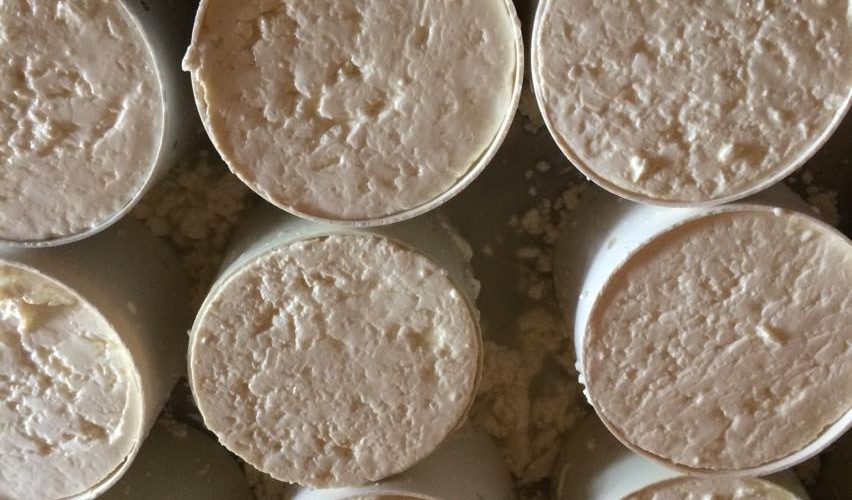This post features student writing.
Hola desde Ecuador!
One of our main community projects is taking turns working in the Queseria (cheese factory) in the community. This Queseria started many years ago and the community members all work together to keep it running. Every morning, the community members bring the milk from their cows and every afternoon the members rotate to sell it in different parts of the region. The main people in charge of making the cheese are Jenny and her daughter, Sisa. The cheese-making process is both entertaining and laborious. We wake up each day at 8 and work until noon. We start the morning by packaging the cheese from the previous day, always remembering to wear cheese suits (white robes) and latex gloves. Then, we wash the molds in soap and hot water, removing the excess cheese bits. The soap smells like cotton candy. While this is happening, Jenny and Sisa make the next batch of cheese in a giant metal tub, which must rise to a temperature of 70 degrees Celsius. When the cheese is setting in the tub, Jenny and Sisa allow us a 30-minute break where we converse in espanol. After the break, one person will use a dustpan to swivel the cheese around. We run a metal plate through the tub to break up the pieces of cheese that sank to the bottom. Jenny places a damp mesh cloth across the tub in order to separate the cheese from the water. The assistants for the day help scoop out the excess water and dump it into various jugs for the pigs to drink later. Frequently, a huge remainder of the water stays in the tub and Jenny uses one of her many contraptions in the factory opening the valve and allowing the water to spill out into another tub. In order to keep the entire room clean, Sisa or Jenny will use a hose and spray the floor. Following this, we use a multitude of tools to pour the cheese across all of the molds, which are situated inside a rope, somewhat like a sheep pen. We press the cheese into the molds, making sure they are filled in a quick manner, all while letting the cheese water drain out. Another person will use a strainer to catch the little pieces of cheese that fall out. We try our best not to waste any cheese. When every mold is even with cheese, the rope is taken off and we either salt them or start flipping them. Depending on the clients’ needs, we’ve had the opportunity to make custom orders: no salt, un poco salt, mucho salt or mucho mucho salt. Then, we flip the cheese over, arguably the hardest part of the job. If you salted it previously, then it was salted again on the other side. Then we put cloth over the cheese to set over the night to start the process over the next day. It has been very interesting to learn about this process and it has made us aware of how much work one piece of cheese entails! We hope you now enjoy and appreciate cheese as much as we do!
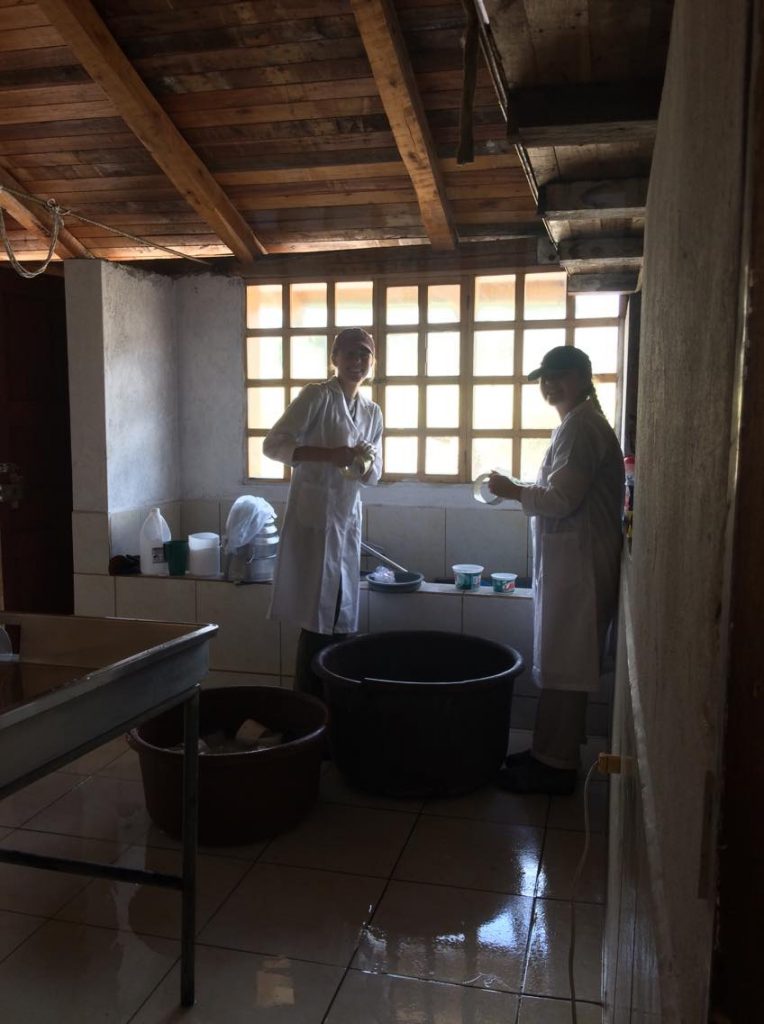
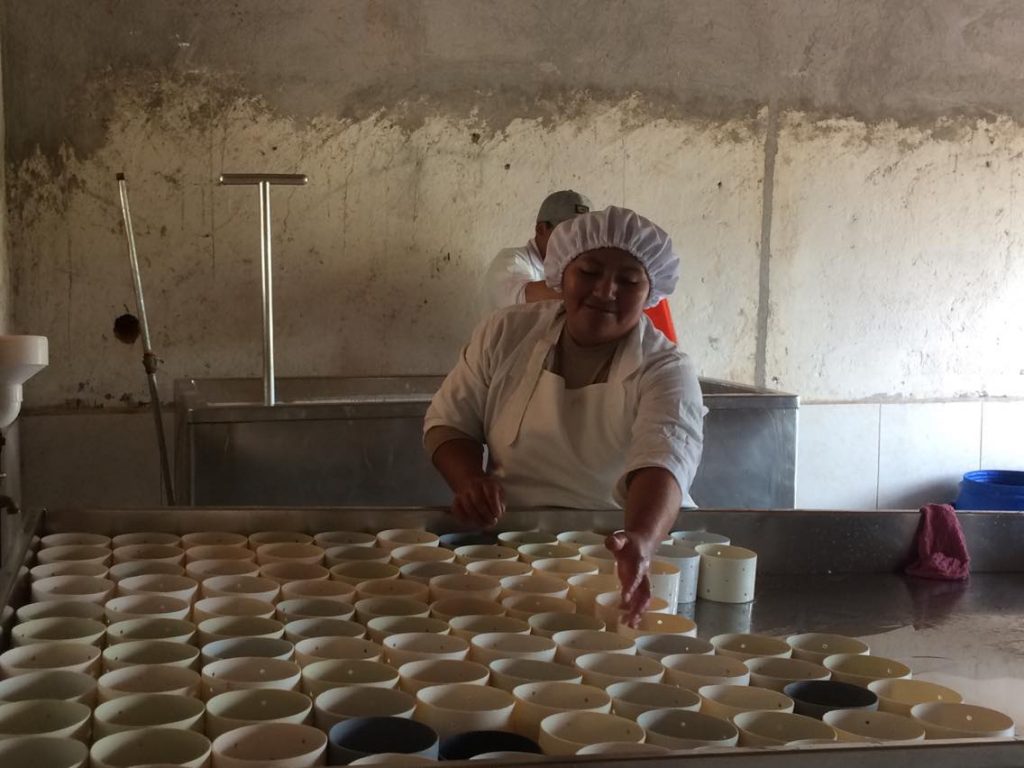
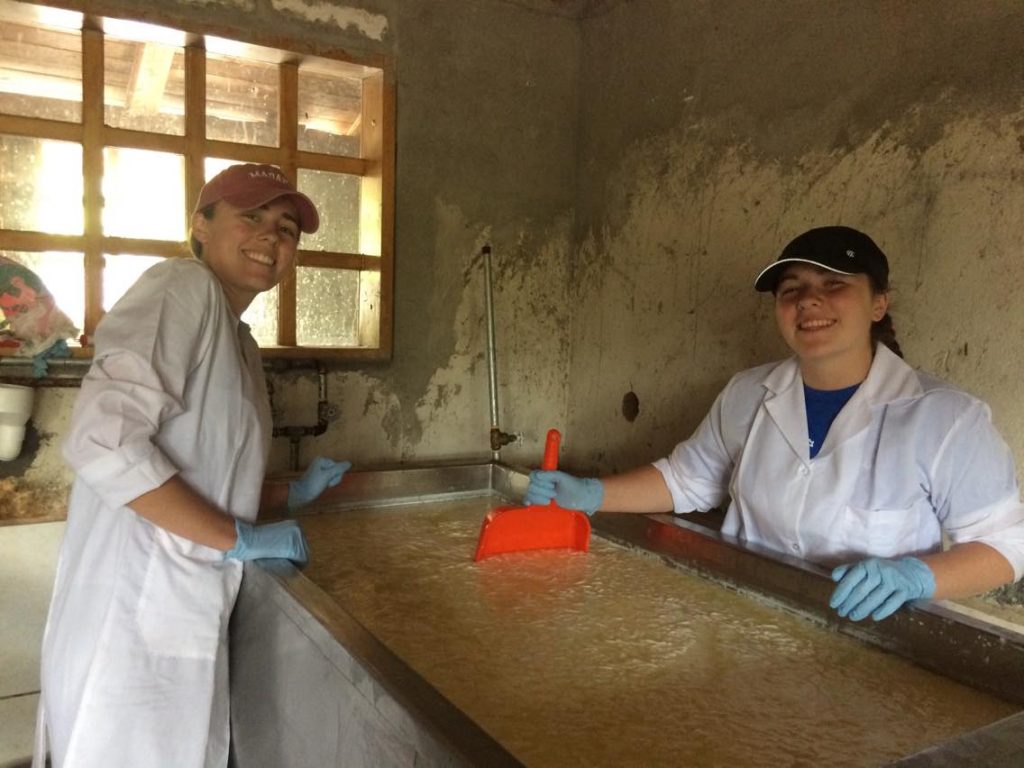
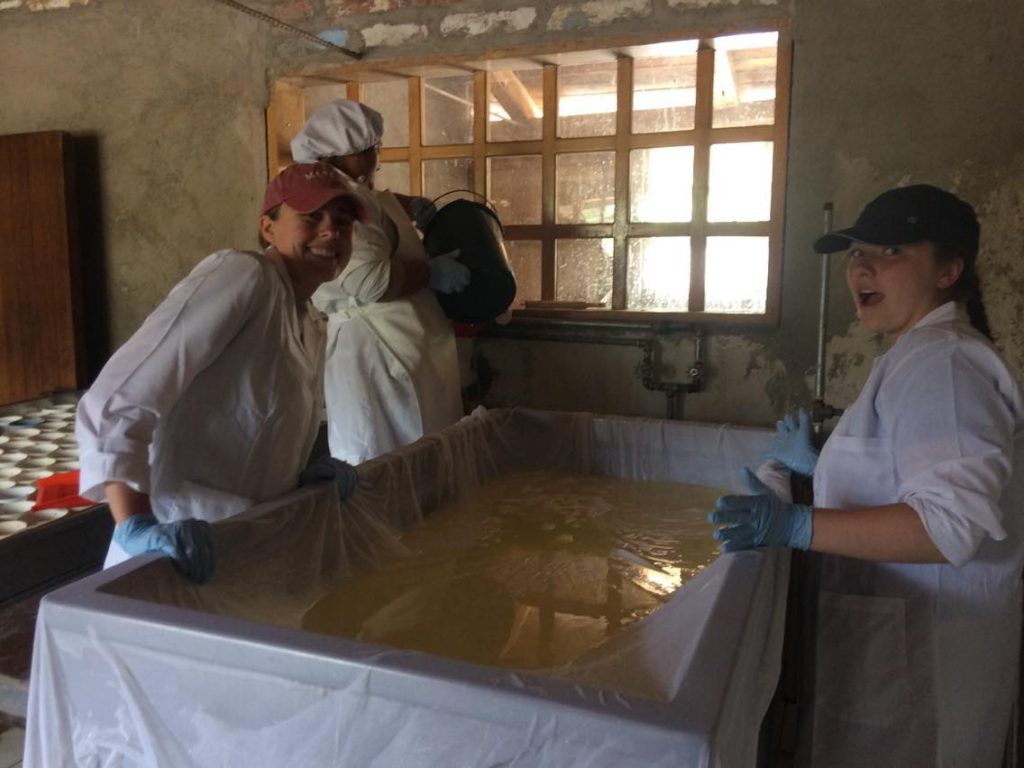
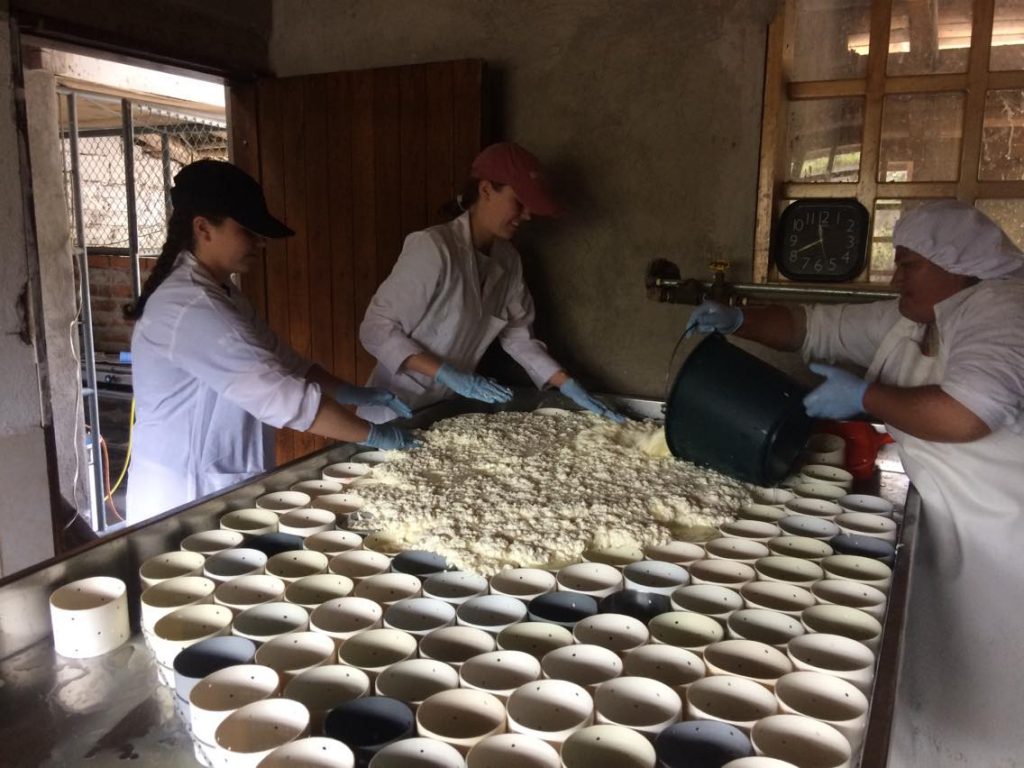
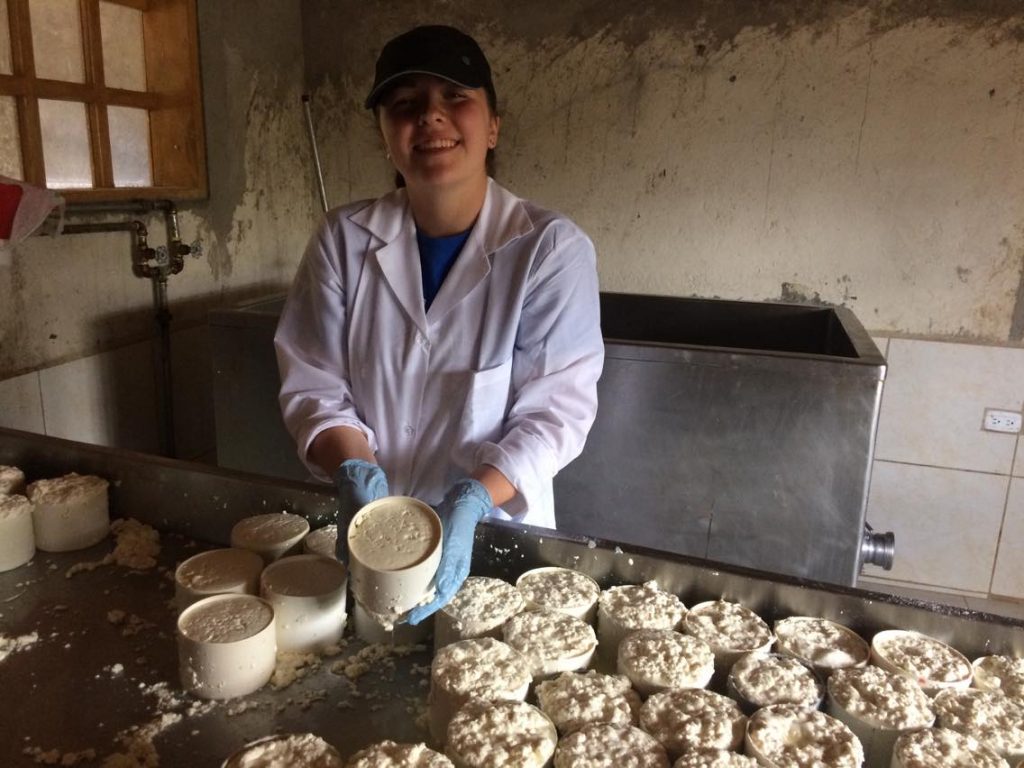
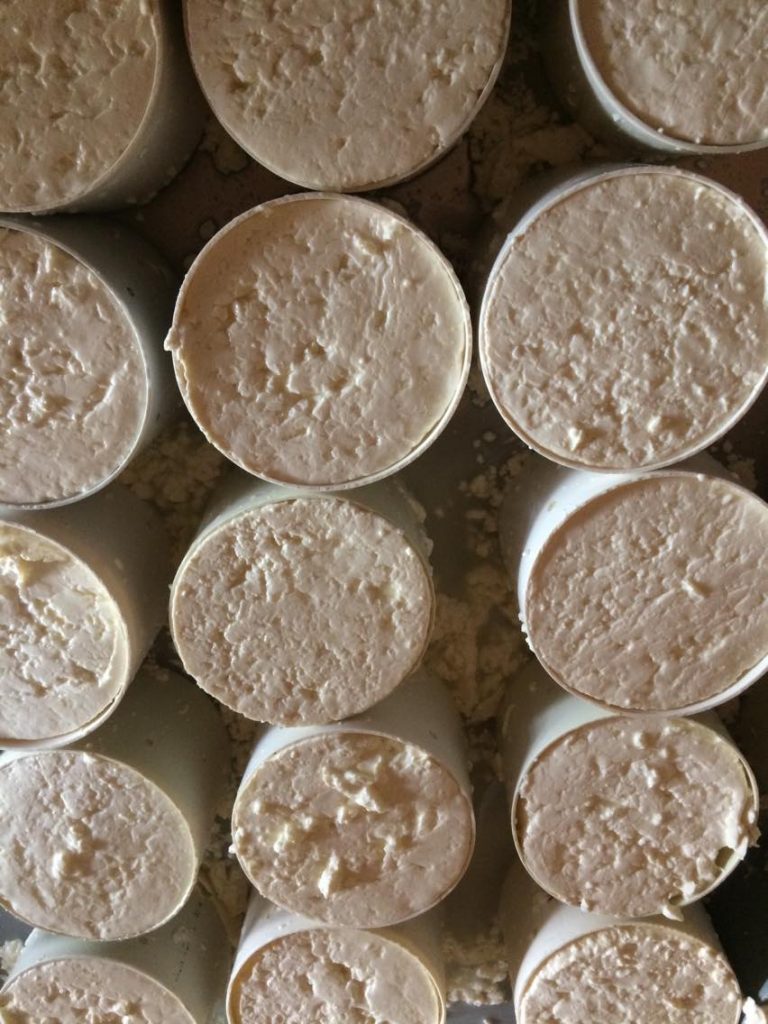
–Sophia L. and Victoria T.

